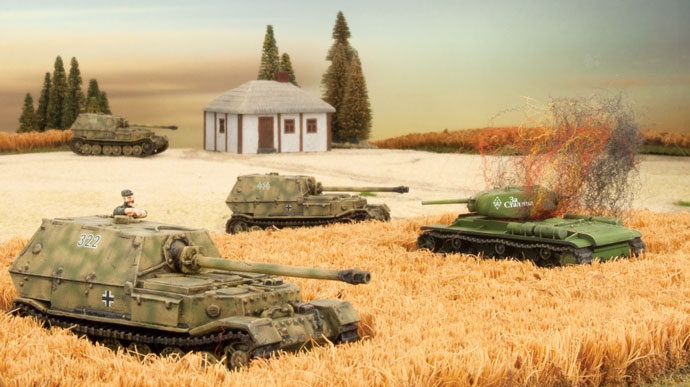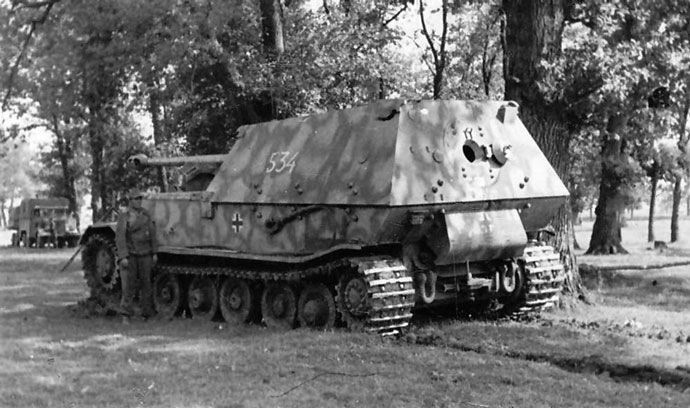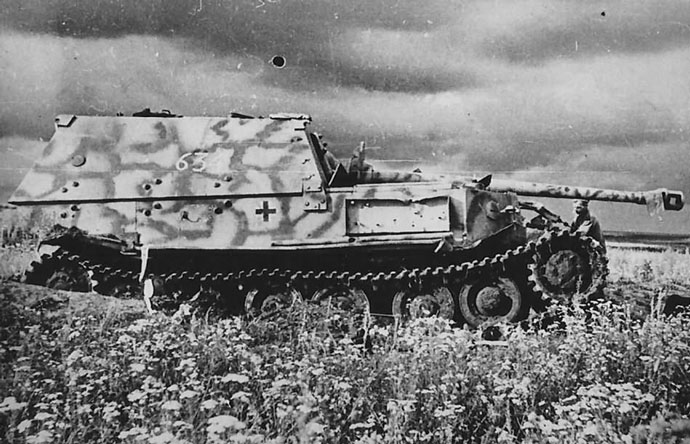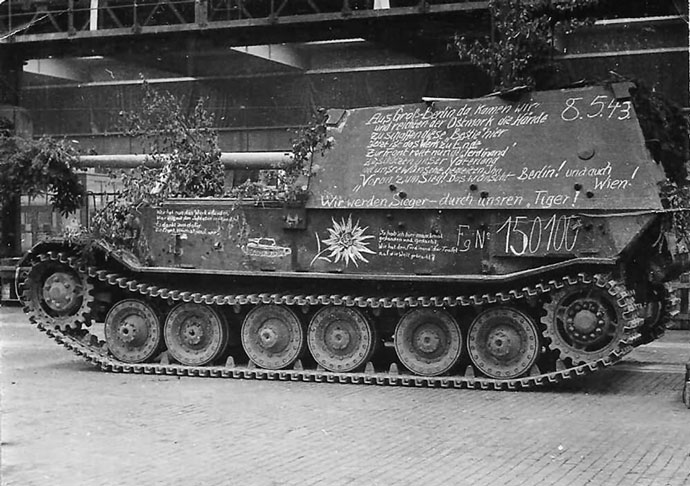|
|
|
|
Products mentioned in this Article
--None--
|
|
|
|
|
|
|
|
|
 |
|
|
|

|
Schweres Panzerjäger-Regiment 656
with Dr Michael L. McSwiney
The German Unternehmen Zitadelle (Operation Citadel) was the Wehrmacht’s last great strategic offensive in the East – a two-pronged attack designed to isolate and destroy Soviet forces in the Kursk Salient.
|
| In preparation for this engagement, the Germans had been rebuilding their badly depleted armoured forces with a host of new and improved fighting vehicles specifically designed to deal with the Soviet T-34 and KV series tanks. While the Panther tank was the most famous of these, and ultimately would be one of the most useful to the Panzer Divisions, many other purpose-built vehicles were created and deployed in this last desperate gamble. |
|
All of the core units of Schweres Panzerjäger-Regiment 656 were made up of these new weapons which the Führer hoped would turn the tide of battle. Formed on 8 June 1943, the regiment was raised in St. Pölten, Austria from the staff of Panzer Regiment 35. The first two battalions attached to the regiment were Schwere Panzerjäger-Abteilung 653 and 654. Both of these battalions were equipped with 45 each of the new Ferdinand tank destroyers – mounting a devastating long barreled 8.8cm gun in a fixed superstructure on the Porsche Tiger prototype chassis.
|

|
|
The third battalion was Schwere Sturmpanzer-Abteilung 216 equipped with the Sturmpanzer 43 (known to Allied intelligence as Brummbär). Based on the Panzer IV chassis, the Brummbӓr was an infantry support platform mounting a 15cm howitzer.
|
|

|
Before the outbreak of hostilities two additional companies were added to the formation - Panzer Kompanie (Funklenk) 313 and 314 which operated the Borgward IV remote controlled demolition vehicle. The Borgwards were operated from 10 StuG (Late) control vehicles and could be directed against enemy strongpoints and fixed defences. The regimental headquarters was equipped with several Panzer III tanks (with both long and short 5.0cm guns and the short 7.5cm gun) for support and a few Panzer II tanks for reconnaissance.
|
|
Assigned to the northern flank of the operation as a part of Model’s Ninth Army, the Battalion was engaged heavily beginning on 5 July 1943. The regiment was initially supporting 86. Infanterie-Division during their attack along the Kursk-Orel railway. The Borgward demolition carriers were tasked with clearing lanes through minefields for the Ferdinand tank destroyers to advance in support of the infantry. Heavy Soviet fire resulted in some Borgward and their StuG (Late) carriers being destroyed before carrying out their tasks, and an additional German minefield not on the maps resulted in several of the heavy tank destroyers being disabled by mines. Ultimately the Germans were able to breach the first line of Soviet trenches and capture the high ground near Otschka northeast of Ponyri – an advance of nearly 10km.
|
|
On 6 July, the advance continued toward Ponyri, and the Ferdinand came into its own as a duel between the German tank destroyers and Soviet armor erupted at ranges of up to 3km. The long barred 8.8cm gun of the Ferdinand was able to destroy any Soviet tank, while at those ranges Soviet guns were unable to hinder the Ferdinand in any meaningful way. Unfortunately as the Germans moved into Ponyri, the advance stalled because of strong Soviet resistance with hand to hand fighting that would earn the city the title “Stalingrad of Kursk.”
|

|
|
With the advance stalled, on 8 July, the Germans would once again commit the Ferdinands with Brummbӓr support in another assault on the city. The Regiment would destroy several anti-tank guns, artillery pieces, and overran several enemy positions. By 12 July most of the city is in German hands, but the Soviets had defended in such depth that no breakthrough was achieved. By 15 July the Soviets were counterattacking, and while the Ferdinands would once again take a strong toll on enemy armour, the German forces had been bled white and were forced to begin a long withdrawal.
|
|

|
During these defensive actions throughout the rest of July and into early August, the Ferdinands of 653. and 654. Schwere Panzerjäger-Abteilung would come into their own with their strong armament blunting numerous Soviet armoured spearheads - preventing disaster on several occasions.
By mid-August, the remaining Ferdinands were withdrawn from service having performed well within the limitations of their design.
|
|
You can field formations from the 656th Heavy Tank-Hunter Regiment using the Ferdinand and Brummbӓr company command cards found in the Ghost Panzer Command Card Deck, and the StuG Assault Gun Company from Ghost Panzers, equipped with Borgward demolition carriers
Next week, I will take you through my preferred method of representing this iconic force in Flames Of War.
~Michael
|
Last Updated On Thursday, January 17, 2019
|
|
|